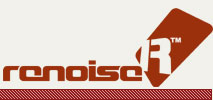Track automation
If you're totally new to Automation, please read the
Quickstart - Automation section first.
Screen displays (from top-left to bottom-right)
Envelope display
Here you draw the desired envelope points with the mouse.
The vertical line shows the current playback position. Use the left mouse button
to draw lines and the right button to draw points.Selectors for the Automation envelope
These upper two settings on the right side
of the Automation window set the DSP (or VST) Effect and a parameter you wish
to automate. After clicking "Add new Envelope" a new envelope will be added
to the list. To remove the envelope from the list, select it and click "Delete selected".Copy/Merge
Copies the selected envelope to the clipboard or merges (pastes) the envelope
into the Envelope display (adds the envelope from the clipboard as new envelope in
the list if no envelope of the same type exists, or overwrites an envelope
with the same settings).Clear
Resets the envelope graph without deleting the Automation envelope from the
list of envelopes.Flip/Mirror
Mirrors the envelope horizontally or vertically.Humanize
This adds small random variations ("imperfections") to each envelope
point to add a more human-like touch to the parameter changes. For example:
When somebody plays the drums, no hit sounds exactly like another. There are
always little variations in volume etc. Use Humanize to imitate this phenomenon.Exp/Rand
Inserts points using an exponential or random scale. If you want a
logarithmical envelope, simply mirror the exponential envelope. This fades the sound in
or out in a much more natural way in most cases..Play Mode
Changes the display and the way of handling of the envelope. According
to the setting ("Points", "Lines" or "Curve" possible), Renoise
interpolates the development of the
Automation envelope. In Curve mode, for example, transitions will follow the curve
and therefore will be smoother although you only entered a couple of points the curve
was created out of.Preset buttons
Store (right mouse button) or recall (left mouse button) certain
saved Automation envelopes by mouse click.< and >
Scroll the envelope to the left or right.
Using track envelopes
Envelopes are graphically displayed variations of track parameters such as volume, pan etc.
If you want to do, for example, a simple snare fade-in the simplest way is to fill each pattern line
with snare and then add a volume envelope that will change the volume (like on the picture above).
You can use envelopes for any DSP effect and you can have multiple envelopes at the same time but
never more than one envelope for one parameter.
As you can see envelopes are very easy to learn but they are also hard to master.
Using them you will make automation of parameter changes in no time. But you will need to
experiment with them to hear what effect they will give. Track Envelopes can replace track
column effects (numbers in pattern) so use them to produce more effects or simpler effect
transitions.
There is an example for track envelopes in the Tutorials section.
Listen to examples that use envelopes and try to add/remove envelopes to hear the effects.
Recording into Track-Envelopes is similar to recording a DSP into the Pattern-Effect row. Instead of using the right mousebutton while recording, press left shift while tweaking a dsp slider together with right mousebutton. You will notice that renoise will create a new Automation-Curve for the used DSP/Parameter combo.
Back to the top!


